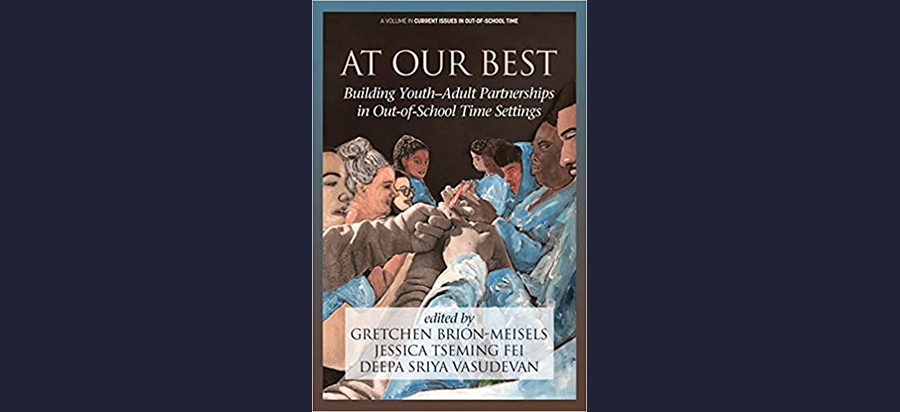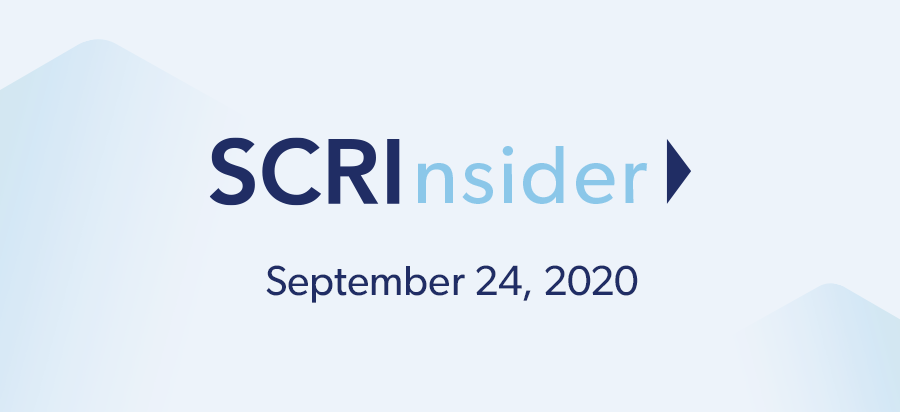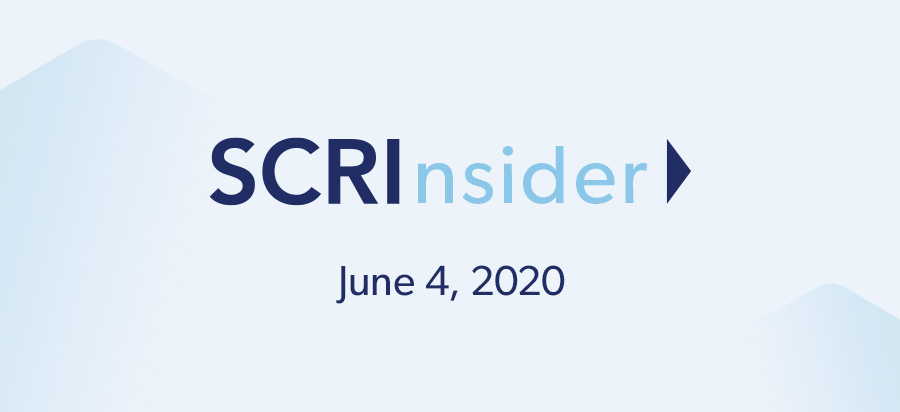In 2016, Information Age Publishing (IAP) launched a seminal and timely series on the Current Issues in Out-of-School Time (OST). The Series promotes and disseminates original theoretical and empirical research, promising practices, and policy perspectives from practitioners to further grow the OST field.
The fourth book in the series, At Our Best: Building Youth-Adult Partnerships in Out-of-School Time Settings (Information Age Publishing, 2020), brings together the voices of over 50 adults and youth to explore both the promises and challenges of intergenerational work in OST programs. SCRI spoke with two of the book’s editors, Gretchen Brion-Meisels and Deepa Vasudevan, as well as chapter co-author Anna West to discuss the importance of youth-adult partnerships and implications for practitioners.
Brion-Meisels is a lecturer in the Prevention Science and Practice Program at the Harvard Graduate School of Education. Her research seeks to explore partnerships between youth and adults that support both individual and collective development. Vasudevan is a visiting lecturer in Education at Wellesley College exploring the working lives and identities of community-based youth workers and the experiences of adolescents in out-of-school time activities. West is Executive Director of Humanities Amped, a nonprofit in Baton Rouge, Louisiana.
SCRI: Where did the idea for this book come from?
Gretchen: The partnership among editors started first. We shared an interest in youth-adult partnerships and related pedagogies and had done some writing together. It had been challenging to bring awareness to this issue, but between the time of our book proposal and its acceptance, the Parkland school shooting happened. The young people who organized in the wake of Parkland, and the media attention directed toward them, shifted mainstream interest in youth-adult partnerships. Those young people, and the many youth organizers who came before them, made space for this conversation in an educational context.
SCRI: What is “adultism” in youth development and education?
Gretchen: Adultism is the unspoken or spoken ways in which people with adult status believe that they have more expertise, wisdom, or right to make decisions and access resources than those without adult status. The world is set up in ways that give adults access to all sorts of agency and decision-making, partially based on a false assumption that children are born as “blank slates” and don’t have any intrinsic wisdom or knowledge. Youth-adult partnerships seek to dismantle the myth that young people don’t bring wisdom with them into relationships and that adults know better.
Youth-adult partnerships seek to dismantle the myth that young people don’t bring wisdom with them into relationships and that adults know better.
Gretchen Brion-Meisels
SCRI: How do you define an authentic youth-adult partnership?
Deepa: There’s more than one way to partner, but it’s generally where youth and adults are coming together in a relationship based in reciprocity and flexibility. The partnership centers youth needs and creates opportunities for more natural mentorship and a sense of mutual understanding. It doesn’t mean that adults don’t play a role in guiding and scaffolding experiences, but in doing so, they are receptive to input and experiences of youth people. Adults might ask students- How do I walk alongside you? and How can I support you in achieving your goals? The ideal partnership involves everyone striving toward some sort of collective action or goal.
SCRI: How are these partnerships different in OST than in school?
Gretchen: Most schools are inherently designed to limit authentic partnerships between youth and adults. The current model of education presumes that adults have knowledge that needs to be given to young people, which is often accomplished a hierarchical structure. In OST, there’s a broader concept of what kind of learning matters, and it’s beyond academics.
Deepa: OST programs are not typically constrained in the same way that schools are around academic benchmarks and test-based accountability. Youth are also voluntarily opting in to these programs, and OST programs have an affordance and flexibility around the program structure and goals. I think these differences affect the kind of engagement and culture around relationship building. Still, we know that classroom teachers care about youth voice and find ways to be really creative with centering their students’ interests. We hope that our audience for the book is educators both inside and outside the classroom.
SCRI: Has the issue become more or less relevant during 2020?
Deepa: It has felt incredibly relevant to 2020. All sorts of connections and boundaries between home, school, and community have been altered in the pandemic and inequities have been illuminated. We’ve seen the need for deep intergenerational connection in a time we’ve been asked to isolate. Youth workers and teachers on the front lines already had deep relationships with young people and families and have been able to keep tabs on how they are doing, as multi-generational units. It’s helpful for young people to know which adults they can connect to.
The youth leadership and organizing around the Black Lives Matter movement has also been incredibly powerful. There are definitely adult mentors, youth workers, and teachers who are behind the scenes, trying to lift them up.
Gretchen: This moment has illuminated more than ever the need for adults to listen to young people—and the power of young people to lead. It has also been disappointing because adults have done the opposite in so many spaces. Too often, adults have brainstormed and debated how to respond to this moment in all-adult spaces, without consulting with young people. Not involving young people in decisions about what their education should look like this fall was a tragic missed opportunity.
All sorts of connections and boundaries between home, school, and community have been altered in the pandemic and inequities have been illuminated. We’ve seen the need for deep intergenerational connection in a time we’ve been asked to isolate.
Deepa Vasudevan
SCRI: Let’s dive deeper on a program that’s implementing youth-adult partnerships. Anna, can you talk about Humanities Amped?
Anna: We partner with schools in Baton Rouge, Louisiana, to bring youth development approaches into the center of classrooms. We pair community educators with classroom teachers to weave three things—wellbeing, critical literacy, and civic engagement—into the school day. Each teacher selects two youth apprentice leaders, and together with a community educator, they form a planning team that shapes curriculum. We take young people who haven’t been positioned as contributors, build up their sense of competence, and put them into positions to collaborate with adults.
SCRI: What do youth-adult partnerships look like in Humanities Amped?
Anna: The curriculum in Amped classrooms emerges from young people’s experiences and their concerns. For example, one year we asked 75 sophomores in Baton Rouge’s first historically Black public high school to think critically about their educational experiences. They spent the better part of the first semester cracking open topics and themes they wanted to explore, reading different texts about other people’s educational experiences to help them reflect on their own. We brought in elders, family members, and alumni from the school community to tell stories about their own educational experiences, listen to students’ stories, and participate in inter-generational dialogue about what is possible.
Based on the themes we heard, we formed research groups. One group focused on teacher shortages after many students talked about long-term substitutes or uncertified teachers in their math, foreign language, and science classes. For example, some students had never had a certified teacher for Algebra II. They described classrooms that were chaotic and out of control because there was not a qualified teacher. Even being next to a classroom with an uncertified teacher was disruptive to student learning and school climate.
Next, we led students in a root cause analysis to assess the teacher shortage issue. Students hypothesized that teachers left because “the students were bad.” To find out if they were right, we co-designed a questionnaire focused on teacher satisfaction to understand what was keeping them in the profession and what was making them leave. Teachers were asked to rate their job satisfaction, why they started teaching, if they thought about leaving the classroom, and provide info on their educational background and teacher certification route. In the meantime, adult staff pulled together different readings to help students learn about educator pathways.
To their surprise, the survey showed that it’s actually their love for the students that keeps most teachers at the school, but they do want more autonomy. Students learned that turnover rates are very high for alternatively certified teachers in low-income/urban schools. They presented their findings at their research conference. They also met with the school administration to talk about teacher retention and shared their findings with faculty and human resources. The next year, many of the students participated in a city-wide campaign to raise teachers’ salaries.
What’s amazing is that, as an adult, I would never have defined the research the way they did. I only see them in that one class so I wouldn’t even know teacher shortage was an issue. That’s the power of youth-adult partnerships.
SCRI: Some people might think it takes too much time to involve youth in decisions or that young people aren’t interested in/knowledgeable about certain things. What are some initial steps adults can take to center youth voice in their work?
Anna: Being in solidarity with young people means taking a listening stance. We have to be students of the students we work with to enter into a place of solidarity with them. That’s hard to do because adults often feel we have to perform expertise in front of young people, families, and even our colleagues. How do we let ourselves be in a place of not knowing so that we can actually hear what young people are saying to us?
Gretchen: What you see in the Humanities Amped vignette is an example of a “problem-posing pedagogy,” which is one aspect of youth-adult partnerships that came up across the chapters of the book. It’s when adults and youth come together to investigate questions of importance to their lives, engage in collective inquiry, and co-construct knowledge. Through acting and reflecting on the world, youth-adult partnerships often result in a commitment to collective action.
In that collective action, feedback loops are very important—explicit, structured times when adults and young people give each other feedback and share feedback about the program. It goes a long way in promoting democratic participation and giving young people a seat at the table.
Being in solidarity with young people means taking a listening stance.
Anna West
SCRI: As you worked with authors, did you learn anything new that surprised you?
Gretchen: I’m not sure that this was surprising, but I was certainly struck by how much time it takes for strong youth-adult partnerships to form. These are not short-term events that happen in two months. Creating a collective transformation takes a long time. Funders and evaluators rarely give programs the time and space to reach that level of depth.
Deepa: The authors reaffirmed for me that if you really want to honor a youth’s passion, adults have to cede some control over planning. Just like Anna discussed being an adult listener versus an adult expert, many of our youth work authors talk openly about the professional tensions around stepping back to honor youth decision-making. They shared the need for structural supports to be successful in a youth-adult partnership, including leadership who really understands that you might not have a pretty outcome from a youth-adult partnership. If you’re really allowing for different types of opinions or decision making, you might not have that final well-packaged event for donors. Is there room for that kind of power-sharing with current program funding? There needs to be a commitment from philanthropy to create space for the time, flexibility, and deep work required.
We are in an important moment to reimagine systems and institutions in support of youth voice.
Creating a collective transformation takes a long time. Funders and evaluators rarely give programs the time and space to reach that level of depth. ... We are in an important moment to reimagine systems and institutions in support of youth voice.




